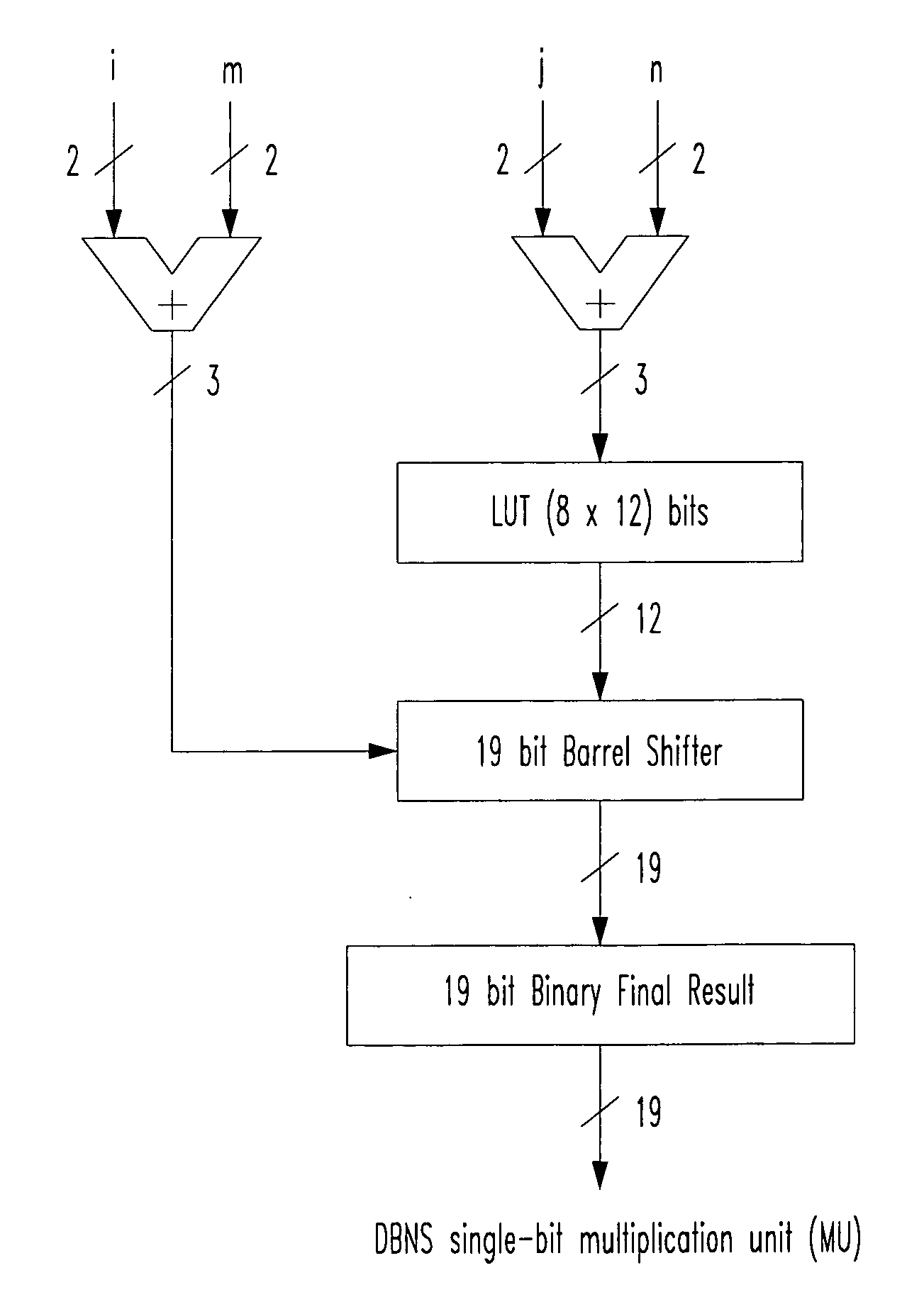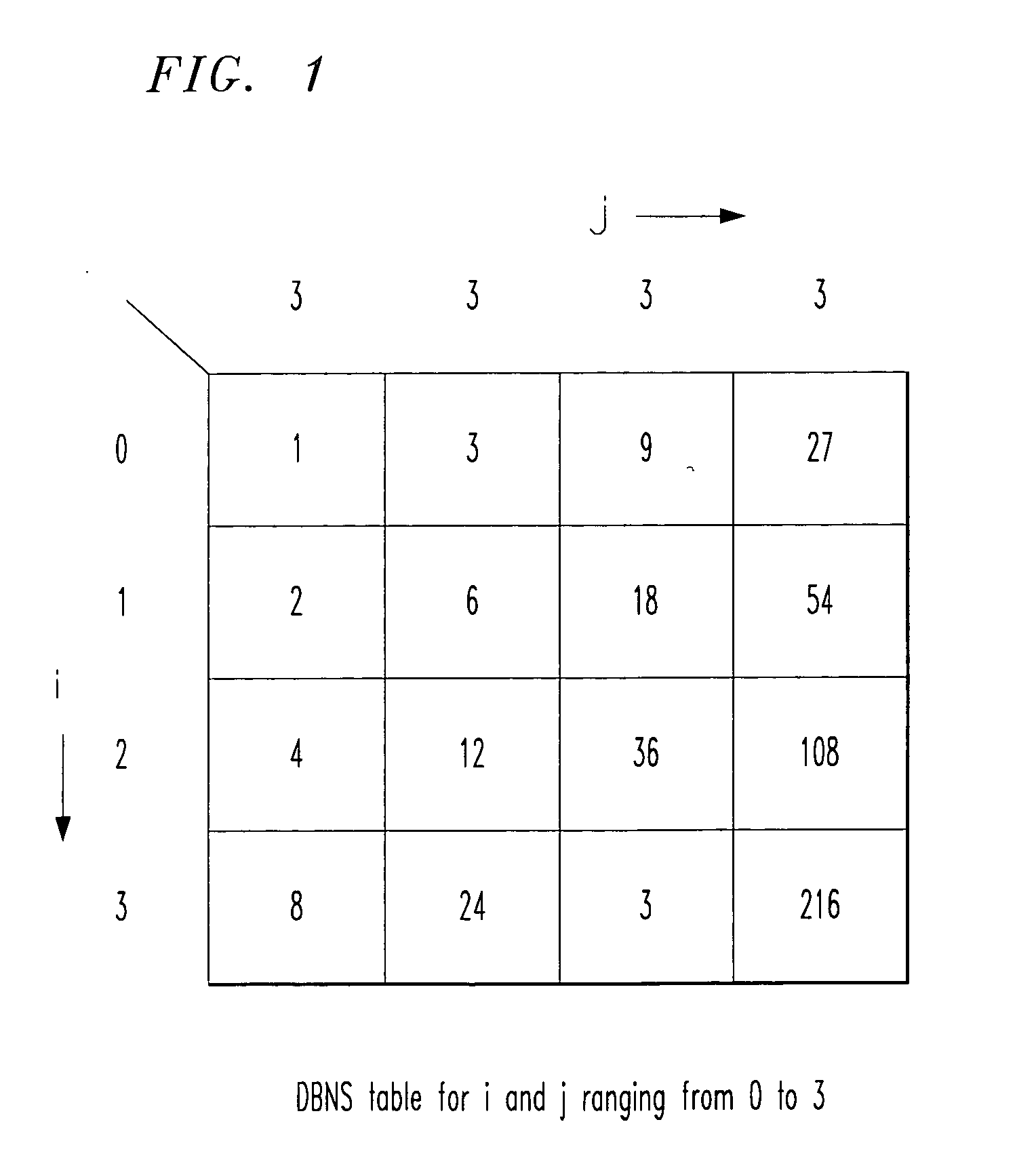Triple-base number digital signal and numerical processing system
- Summary
- Abstract
- Description
- Claims
- Application Information
AI Technical Summary
Benefits of technology
Problems solved by technology
Method used
Image
Examples
Example
[0153]An example 8-bit binary-to-TBNS conversion on the number 215=(binary 11010111) is here described:
[0154]1st iteration: Data / number X=215=(binary 11010111) has bit position D7=1, so X is compared with the TBNS-table sub-range which holds cell-values (100, 150, 180 and 225), as denoted by the range table of FIG. 16. The 1st set of TBNS [i1,j1,k1] indices are determined to be [2,2,1] respectively; which are the indices linked with TBNS-table cell-value 180=(binary 10110100). Then, 180=(binary 10110100) is subtracted from X=215=(binary 11010111) with the result 35=(binary 00100011) serving as the data / number (X) for the next iteration.
[0155]2nd iteration: data / number X=35=(binary 00100011) has D7=0, D6=0, and D5=1, so X is compared with the TBNS table sub-range which holds cell-values (30, 36, 45 and 50), as denoted by the range table of FIG. 16. The 2nd set of TBNS [i2,j2,k2] indices are determined to be [1,1,1] respectively, which are the indices linked with TBNS-table cell-value...
PUM
 Login to view more
Login to view more Abstract
Description
Claims
Application Information
 Login to view more
Login to view more - R&D Engineer
- R&D Manager
- IP Professional
- Industry Leading Data Capabilities
- Powerful AI technology
- Patent DNA Extraction
Browse by: Latest US Patents, China's latest patents, Technical Efficacy Thesaurus, Application Domain, Technology Topic.
© 2024 PatSnap. All rights reserved.Legal|Privacy policy|Modern Slavery Act Transparency Statement|Sitemap



